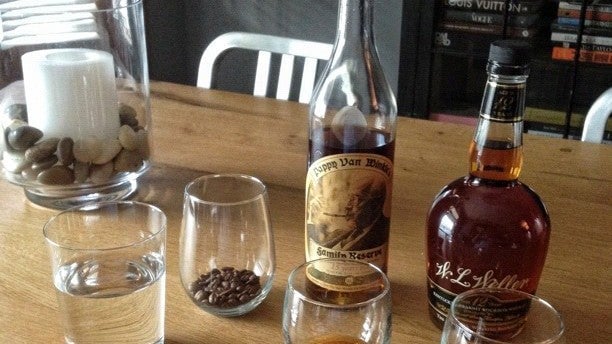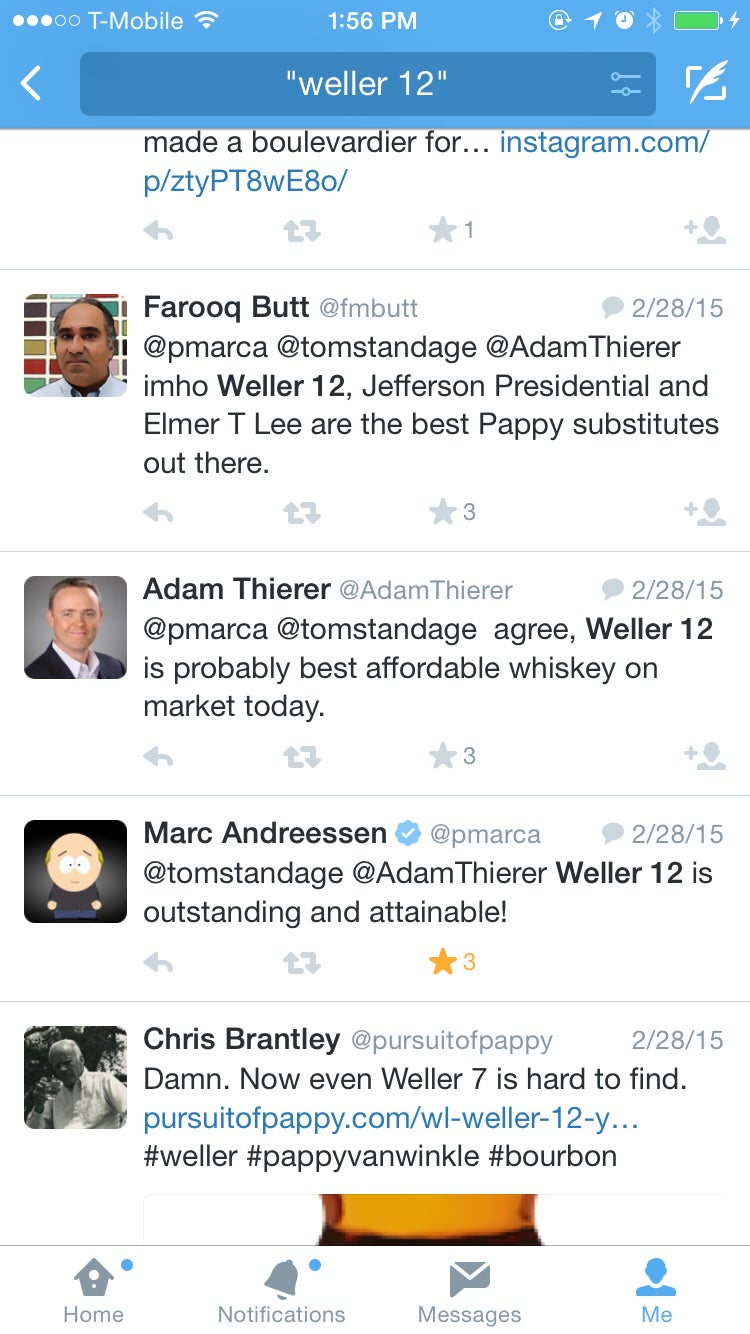If you’re pitching Marc Andreessen, here’s the bottle of bourbon to bring him
Along with being able to see into the future, it turns out Marc Andreessen has great taste in bourbon. At least, I think he has great taste in bourbon because he shares my taste, as well as the taste of many others who have collectively created a bourbon shortage* the likes of which have not been seen since Prohibition.


Along with being able to see into the future, it turns out Marc Andreessen has great taste in bourbon. At least, I think he has great taste in bourbon because he shares my taste, as well as the taste of many others who have collectively created a bourbon shortage* the likes of which have not been seen since Prohibition.
(*Is there really a bourbon shortage? As of a few years ago there were 4.3 million barrels of bourbon aging in Kentucky. And that number has only gone up as distillers recognize that brown spirits have made a huge comeback in the market; so much so that even the barrels themselves are now in short supply. There is now plenty of bourbon, but the problem is that the spirit improves immensely with age. What we really have a shortage of is bourbon aged between six and fifteen years old, which is the sweet spot of maturity for most American whiskey.)

You may ask, how did I find out about Andreessen’s preference in bourbons? I have not sat down for a drink with him. Instead I discovered his preferences while scouring for a favorite of my own: W.L. Weller 12 year old bourbon. Weller 12, as it’s usually called, is a smooth drinking bourbon that, to me, has a creamy, vanilla-infused taste complimented by an almond nuttiness, and just enough alcohol burn to balance it all out. It’s dessert in a glass, and I love it.
It also used to be very affordable: Bottles of Weller 12 could be had for around $30 two or three years ago. Not only has the price since generally gone up, Weller 12 has become so scarce that I resorted to searching Twitter and other services (sorry, not going to give away all my secrets) to ascertain where bottles can still be purchased. This year I paid, ahem, several multiples of that price (I can’t bring myself to type the number), for a lone bottle, all because of another phenomenon influencing the bourbon market: bunkering.
As bourbon enthusiasts realized their favorite products were becoming harder to find, they started purchasing multiple bottles: two, three, six, why not 12. They then bunkered that bourbon in their basements, for the day when they couldn’t find their preferred dram, or, I suppose, the day when the apocalypse comes. Liquor store owners noticed. Though wholesale costs have only crept up slightly, retailers’ prices have skyrocketed for any bottle with even a slight smell of scarcity about it.
Meanwhile, the United States’ antiquated, 3-tiered liquor distribution system—from distiller, to distributor, to retailer, each layer with its own licensing requirements—creates a kind of state-sponsored oligopoly that further exaggerates and distorts the market. Weller 12 can still be plucked off the shelf in some states, even at near retail prices, as Marc seems to be able to do, yet is completely absent from others. (Imagine only being able to buy a Samsung TV in Maine, and you start to get the idea.)
That’s why it both pains and pleases me to see Marc go public with his love for Weller 12. There’s already far too much demand for the supply that Buffalo Trace, Weller’s distiller, will be able provide, until its newer stock has aged for the requisite dozen years. And yet, it’s a safe bet that most of the bottles of the stuff made in recent seasons are currently gathering dust in basements all around the US. Distillers, by the way, have recently taken to removing age statements, in order to stretch their older barrels by mixing in younger product. Most connoisseurs agree, however, that there’s simply no replacing age for certain desirable characteristics.
A new book, “Bourbon Empire,” by Reid Mitenbuler, explains that aficionados’ love for particular brands of bourbon in fact has more to do with savvy marketing by distillers than any particularly unique recipe. Most distillers use only one recipe, or mash bill—Buffalo Trace primarily uses two. (Four Roses famously uses ten, though these are mix-and-match variations of two mash bills and five strains of yeast, for fermentation.) The variations in taste have, in other words, more to do with age and the environmental conditions of the location where the barrels are stored, than any of the marketing hype or hand-crafted nonsense you hear about bourbons these days. As distillers have gotten better at understanding these conditions, they learned to pick barrels that have certain taste profiles, and reserve them for certain brands–and certain price points.
So, what’s the problem with Marc’s drink? Before scarcity set off the whiskey-hoarding panic of recent years, Weller 12 was designed to be an every-day, accessibly-priced pour. Better than the bottom-shelf, but not a whiskey unicorn. That status was reserved for its cousin, Van Winkle Special Reserve 12 Year Lot B. Yes–Lot B is part of the Pappy Van Winkle family–of recent fame for sky high prices, and a massive, since solved, theft straight from distillery in Kentucky. (But, don’t call the Lot B, “Pappy,” which is what the 15, 20, and 23 year-old expressions go by, unless you want to incur the ire of any nearby bourbon nerds.) The Van Winkles have always been scarce, and as their reputations have grown, liquor store owners have taken to pushing high-priced Weller 12 on unsuspecting consumers as “almost Pappy,” exacerbating the shortage of the once-humble Weller 12, with its plastic screw-top cap.
Indeed, the connection between Weller and Van Winkle is the first secret knowledge that most bourbon-nerds learn, and Marc knows about this lineage, too:
(It’s 2nd semester coursework to learn that Van Winkle was once made at an entirely different distillery, but too much for our purposes here.)
When even the man who invented the struts of modern internet computing is passing up the high-end Van Winkle (and its $500 or more price tag) for the working man’s Weller 12, what chance do the rest of us stand? All we can do is wait and hope that Sazerac, parent company of Buffalo Trace, is really laying down enough barrels to satisfy demand, which only seems to grow.
That said, anticipated future demand does often fuel supply, so if the tweets of the world’s most famous, living, venture capitalist help convince the folks at Buffalo Trace to make more, I’m all for it. Maybe this story will help, too. While we’re at it, I hope our friends at Heaven Hill are reading–Elijah Craig 12 year old is the latest bourbon that nerds are fearing will soon become impossible to find, at least as a true 12 year old drink.
Surely any young founders who find their way into Marc’s A16Z boardroom should bring him a bottle of Weller 12, or at least sneak in a flask. What better way to celebrate a funding round, than with a round? Cheers, Marc!
Then again, about that drink…